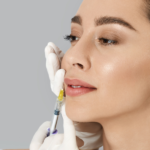At SkinJoy Life, we understand that looking your best is not just about beauty, it’s about feeling confident and vibrant at every age. One popular method to achieve this is through dermal fillers, a cosmetic treatment known for its efficacy in reducing signs of aging. However, one common question we often encounter is: “How long do dermal fillers last?” In this article, we will delve into the durability of dermal fillers, exploring factors that influence their longevity and tips to maximize their effectiveness.
What Are Dermal Fillers?
Dermal fillers are injectable substances used to add volume and smooth out wrinkles and lines on the face. Commonly used fillers include materials like hyaluronic acid, calcium hydroxylapatite, poly-L-lactic acid, and polymethylmethacrylate beads. Each of these substances works by restoring lost volume or stimulating the body’s natural collagen production, thereby enhancing facial contours and improving skin appearance.
The Lifespan of Dermal Fillers
The duration that dermal fillers last can vary significantly based on the type of filler used, the area treated, and individual patient factors. Here’s a breakdown:
- Hyaluronic Acid Fillers: These are among the most popular choices due to their natural composition and reversible nature. Brands like Juvederm, Restylane, and Belotero can last anywhere from 6 to 18 months, depending on the specific product used.
- Calcium Hydroxylapatite (Radiesse): Known for its ability to stimulate natural collagen production, Radiesse typically lasts about 12 to 18 months.
- Poly-L-Lactic Acid (Sculptra): Sculptra is designed to gradually replace lost collagen and can last up to 2 years, as it works subtly over time.
- Polymethylmethacrylate Beads (Bellafill): As a semi-permanent filler, Bellafill can last up to 5 years, making it one of the longest-lasting fillers available.
Factors Influencing the Longevity of Fillers
Several factors can affect how long fillers maintain their effect:
- Metabolism: People with faster metabolisms may metabolize fillers more quickly, reducing their lifespan.
- Treatment Area: Areas that experience more movement, like the lips, may see fillers dissipate faster than less active areas such as the cheeks.
- Lifestyle: Exposure to sun, smoking, and poor diet can accelerate the breakdown of fillers as well as natural collagen.
- Quantity and Quality of Filler: The amount of filler used and the skill of the injector play critical roles in the outcome and duration of the treatment.
Tips to Extend the Life of Your Dermal Fillers
To maximize the longevity of your dermal fillers, consider the following tips:
- Follow Up Care: Adhere to post-treatment instructions provided by your clinician. This may include avoiding excessive heat or strenuous exercise immediately after treatment.
- Maintenance Treatments: Schedule touch-up appointments as recommended to maintain optimal results.
- Skin Care: Use a high-quality skincare regimen that includes sunscreen to protect the skin and maintain filler integrity.
- Healthy Lifestyle: Maintain a healthy lifestyle, including proper hydration, a balanced diet, and avoiding smoking.
Conclusion
While the longevity of dermal fillers varies, advancements in cosmetic technology continue to improve their durability and effectiveness. At SkinJoy Life, we pride ourselves on providing top-quality treatments that not only enhance your natural beauty but also offer lasting results. Whether you’re considering dermal fillers for the first time or are looking for maintenance tips, we’re here to help you achieve and sustain your desired look for as long as possible. Remember, the key to prolonged beauty is not just in choosing the right treatment but also in taking care of it afterward.






